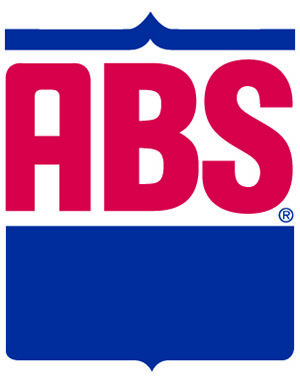Lee Schreiver was raised on a dairy farm in Pennsylvania.
After finishing a year of college and serving a mission for his church, it was time to decide what he wanted to do with his life. He decided he wanted to go into dairy farming and eventually run his father's farm, so he enrolled in the dairy herdsman program at Utah State University in 2004.
"It attracted me because it was just a nine-month program. I could learn more basics in a short amount of time and get right back into the work field, instead of going through a four-year dairy science program," Lee says.
Ben Pulsifer of Missouri was also born and raised on a dairy farm. He enrolled in the program in 2007.
"It was about time for me to take over the farm, and I thought I needed a little more knowledge to do so," Ben says.
The dairy herdsman course is a nine-month program that is focused on teaching dairy cattle management skills. Classes include such things as dairy nutrition, dairy genetics, reproduction and A.I., dairy judging, and records and finances. Almost every class has a lab on the university dairy where students put what they are learning to use. Three out of every five days are spent with the university dairy herd.
"Most of the students come from a dairy farm background, so they know what to do and how to do it for the most part. But most of them don't know why. So the classroom time is spent teaching them why. Then what we do outside goes a little bit beyond what they've done on the farm," says Justin Jensen, the program's coordinator.
Chad Sunderland of Chester, Utah, another graduate of the program, says he has found himself using much of the information he learned every day back at his family farm.
"The class sizes were small. You had a lot of one-on-one time with your professors, which made it easier to learn and made it a better atmosphere," Chad says.
The students participate in a lot of hands-on projects. Chad participated in a calf-raising study in which he was assigned a calf to feed and monitor.
Chad says the A.I. lab was the most hands-on. Students were given the opportunity to practice A.I. every day. Before inseminating a cow, the students looked at cow autopsies and learned what was where in the reproductive system. The final was a skills test where the students demonstrated that they could inseminate a cow.
For the lactation and milking systems class, Justin invites a representative from a milking systems equipment company to teach the lab so they can keep current on new technology.
"He walked us through some of the common problems you might find on your facility when it comes to trip breakers or vacuum pumps. He walked us through the systems and gave us a general feel for what we could expect in the milk barn," Chad says.
The students in the dairy judging class had the opportunity to go to World Dairy Expo and participated in the judging contest.
"Judging cattle was fun, but giving reasons for our choices, for me, never having done that before, that was probably the most challenging thing," Lee says.
All the students in the program are given the opportunity to go to World Dairy Expo and World Ag Expo. On each trip the students visit 10 to 12 dairies.
"We visit some small, elite, purebred herds, and then some 5,000- to 10,000-cow dairies that are new and progressive. I try to show them the variety and the spectrum of the dairy industry," Justin says.
Lee says he thought these trips were the most exciting part of the program.
"I learned there is more than one way to do things. It was interesting to see how other guys are operating their farms," he says.
Ben says the most interesting dairy he saw was a 10,000-cow dairy in California. He liked to see how they managed such a massive operation.
But Chad says he was surprised to see the small dairies in Wisconsin.
"Being a western dairy farmer, I was impressed with how small the dairies still are and that people can still make them profitable. They only milked about 50 cows or so, and they were still able to earn a living and be profitable at it," Chad says.
Students are required to work both semesters at a dairy or other dairy-related business. Students are paid and receive credit for their work experience. Chad worked at Livestock Nutrition Services and at the university dairy.
"You were living what you were studying. You could apply what you learned that day when you went to work that night," he says.
Lee says that he feels what he learned in the program was very applicable to what he does today as a herdsman on his father"s farm, and that it is good preparation for employment in the dairy industry.
"I think the herdsman program would be great in my case because, if I could find an employee who was interested, I could send them to school there. Someday it would be really nice to hire someone from a program like that because I think they would be more valuable to me as an employer," Lee says.
Ben is also currently working as a herdsman on a farm in Raft River Idaho. His plans are to continue to educate himself, and one day he hopes to go back to Missouri and take over the family farm.
"I think the program was well worth the time and money that I had to put forth to get through it," Ben says. PD
Alisa Anderson
Staff Writer
Progressive Dairyman




